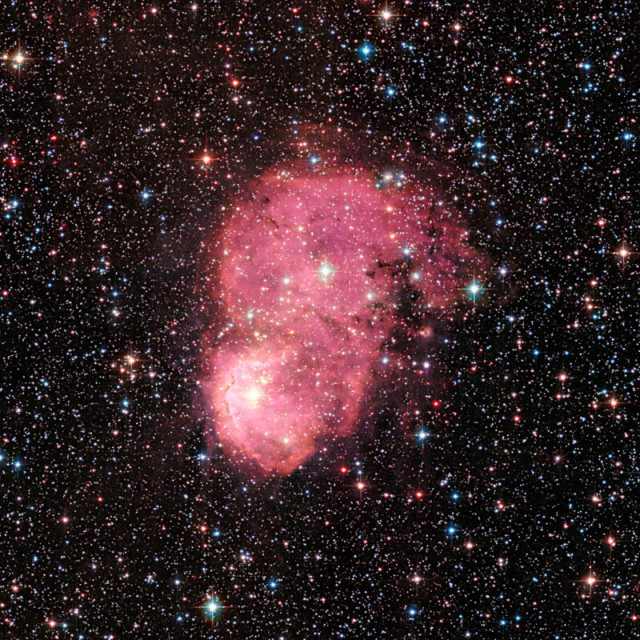Hubble's 35th Anniversary: A Stunning Glimpse of NGC 248
Thirty-five years ago, the Hubble Space Telescope launched, revolutionizing our understanding of the universe. To commemorate this milestone, we're celebrating with a breathtaking image: NGC 248, a stunning reflection nebula captured in all its glory. This vibrant celestial object, located in the constellation Camelopardalis, showcases the power and enduring legacy of Hubble's observations.
Unveiling the Beauty of NGC 248
NGC 248, also known as the "Pacman Nebula" due to its distinctive shape, is a captivating example of a reflection nebula. Unlike emission nebulae that produce their own light, reflection nebulae shine by reflecting the light of nearby stars. In this case, the light source is a young, hot star that illuminates the surrounding dust and gas clouds, creating a mesmerizing spectacle of color and texture.
Key Features of the Hubble Image:
- Vibrant Blues and Purples: The dominant colors in the image are blues and purples, a characteristic of reflection nebulae scattering blue light more effectively than red.
- Intricate Structures: Hubble's high-resolution capabilities reveal intricate details within the nebula, showcasing the complex interplay of gas and dust.
- Star Formation: NGC 248 is a region of active star formation. The image hints at the presence of young stars embedded within the nebula's dust and gas.
- Scientific Significance: Studying reflection nebulae like NGC 248 provides crucial insights into the process of star formation and the evolution of interstellar clouds.
Hubble's 35-Year Legacy: A Revolution in Astronomy
The Hubble Space Telescope's contribution to astronomy is immeasurable. For 35 years, it has provided us with unparalleled views of the cosmos, capturing iconic images and making groundbreaking discoveries.
Hubble's Major Contributions:
- Deep Field Images: Hubble's deep field observations have revealed the existence of countless galaxies, expanding our understanding of the universe's vastness.
- Planetary Studies: From detailed images of Jupiter's Great Red Spot to the discovery of moons around distant planets, Hubble has revolutionized our understanding of planetary systems.
- Star Formation and Evolution: Hubble's observations have significantly advanced our knowledge of star formation, stellar evolution, and the life cycles of stars.
- Dark Energy Research: Hubble's data has played a crucial role in the discovery of dark energy, a mysterious force that is accelerating the expansion of the universe.
Celebrating Hubble's Achievements and Looking Towards the Future
The image of NGC 248 serves as a powerful reminder of Hubble's enduring legacy. As we celebrate its 35th anniversary, we also look forward to the future of space exploration and the continued advancements in astronomical observation. The James Webb Space Telescope, Hubble's successor, is already making incredible discoveries, promising even more breathtaking images and groundbreaking scientific advancements in the years to come.
Learn More:
- (Link to NASA's official Hubble site)
- (Link to ESA's Hubble site)
This 35th anniversary image of NGC 248 is a testament to human ingenuity and our relentless pursuit of knowledge. It inspires us to continue exploring the mysteries of the universe and to appreciate the beauty of the cosmos. What celestial wonders will Hubble reveal next?
